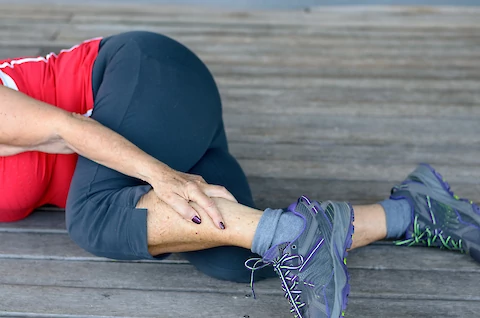
If you're a senior or are caring for one, you've likely heard of shin splints. This common yet quite painful condition often affects older adults, greatly hindering their day-to-day activities. Shin splints can make even the simplest tasks like walking to the mailbox an uncomfortable challenge. Today, we're going to explore all things shin splints—what they are, what causes them, how to prevent them, and how to treat them. Ready to get started?
Understanding Shin Splints
When we say shin splints, we're typically talking about discomfort or pain along the front side of your lower leg, more scientifically known as medial tibial stress syndrome. In seniors, they're often caused by stress or excessive force on the shin bone and the tissues attaching it to the surrounding muscles. This is usually due to sudden changes in physical activity, such as a new exercise routine or a dramatic increase in the amount or intensity of exercises.
In identifying shin splints, watch out for a dull ache in the front part of the lower leg, pain on either side of the shin bone, or muscle pain. You might also notice some swelling in the lower leg. It's also important to remember that these symptoms could indicate other issues such as fractures, so it's always best to consult with a healthcare professional if you're experiencing persistent pain.
Preventing Shin Splints
Prevention, they say, is better than cure, and this is especially true for shin splints in seniors. One of the key preventive measures is wearing the proper footwear. Shoes that are worn out or don't fit correctly can increase the risk of shin splints. Regular and gentle exercise, including stretching and strengthening exercises, can also go a long way in preventing shin splints. Additionally, respecting the body's need for rest and recovery is just as crucial in preventing shin splints. Rest gives your muscles the time they need to repair and strengthen, helping to prevent injuries.
Shin Splint Treatment
If preventive measures come a little too late and you find yourself dealing with shin splints, don't worry, there are several options available. Medical treatments such as anti-inflammatory medicines can help reduce pain and inflammation, and physical therapy can help strengthen the affected muscles. Seniors can also benefit from home care remedies such as applying cold packs to the affected area (do not apply ice directly to the skin) and gentle stretching exercises. And, of course, rest plays a critical role in the treatment process too.
The Role of Caregivers in Prevention and Treatment
Having a caring and informed caregiver can make a world of difference in both the prevention and treatment of shin splints. Caregivers can ensure that seniors are wearing appropriate footwear and assist with gentle exercises. They can also help monitor symptoms and ensure that seniors are getting enough rest. Their role promotes not just recovery from shin splints but also the overall well-being of seniors.
Lean On Senior Helpers
Preventing and treating shin splints is essential to maintaining a comfortable and active lifestyle. With the right preventive measures and treatments, coupled with the support of a great caregiver, shin splints can become a thing of the past. If you are struggling with shin splints and live in Franklin, Stoughton, Webster, Foxboro, or Sharon, contact us at Senior Helpers Milford-Franklin. We offer a wide array of services, from drop-in companionship to assistance with physical activities and daily self-care tasks.